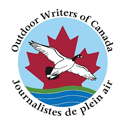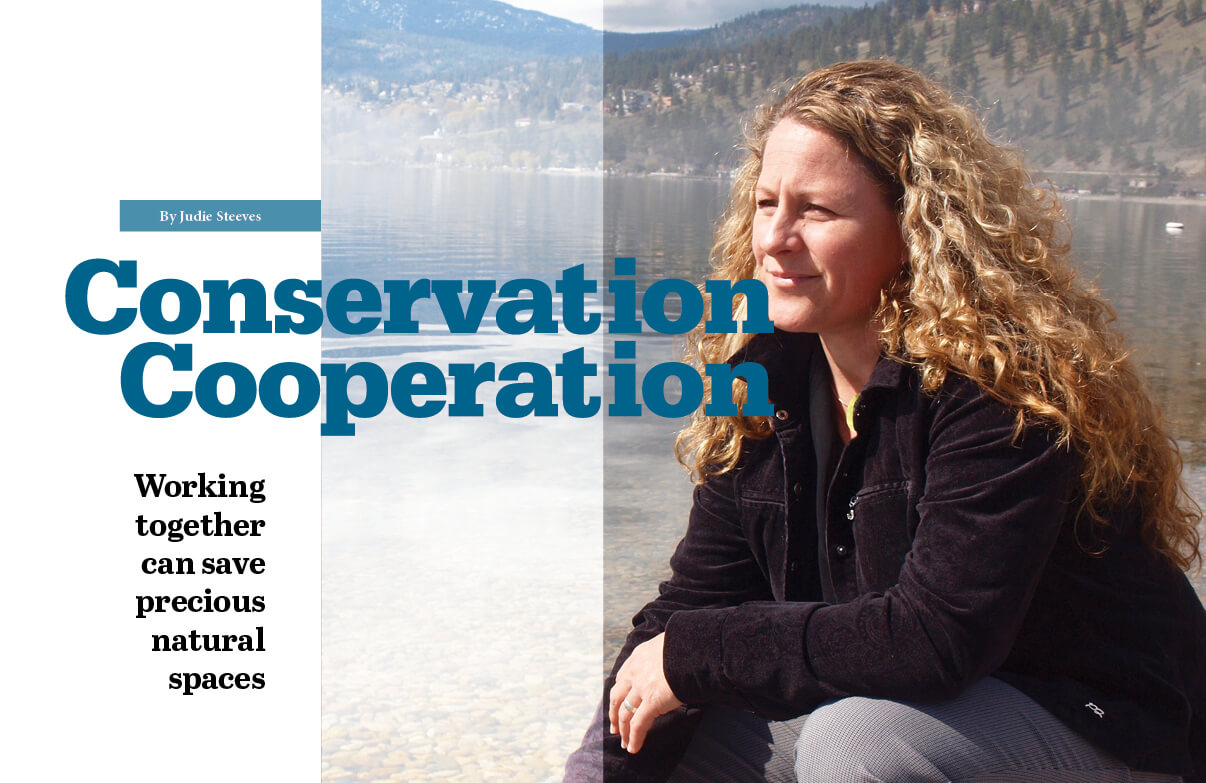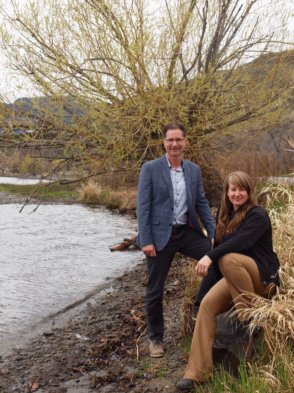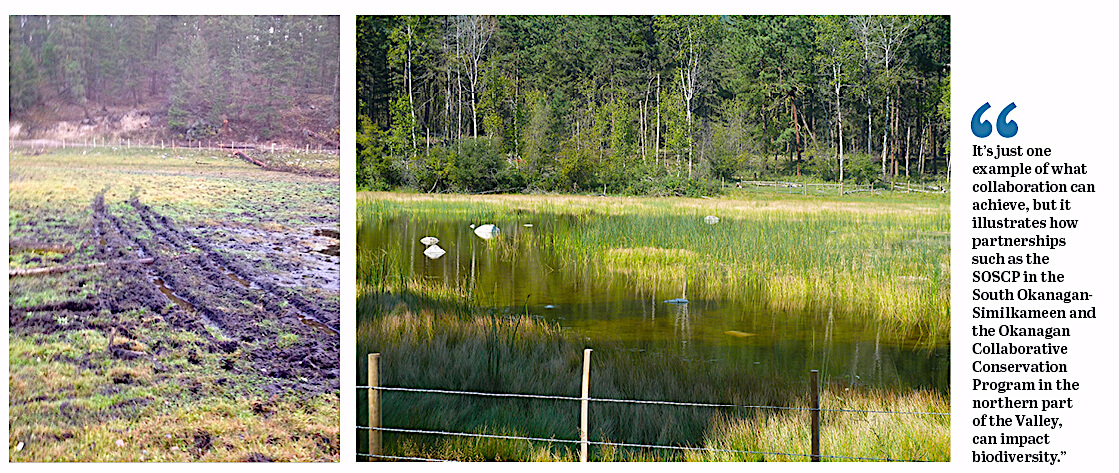 2018 OWC COMMUNICATIONS AWARDS WINNER
2018 OWC COMMUNICATIONS AWARDS WINNER
This annual competition recognizes and rewards excellence in outdoor communication. Congrats to Judie Steeves for receiving the Ducks Unlimited Canada Award in Conservation for Conservation Cooperation published in the June 2017 Okanagan Life Magazine.

[downloads ids=”146971″ excerpt=”no” columns=”1″]A small puddle of muddy water remained in the most-sunken part of a wheel track through the barren, weedy, torn-up meadow that was once Ritchie Lake, but a deer wandered down and lowered her muzzle to it.
It was a scene that didn’t sit well with Bryn White, manager of the South Okanagan Similkameen Conservation Program, nor with neighbours like long-time Summerland resident Lorraine Bennest, who remembers this dry field being a large pond with open water surrounded by reeds, hosting a variety of ducks, frogs and other aquatic species.
More than 400 hectares in the Garnet Valley were purchased for conservation purposes in the 1980s through a partnership between the province, the Habitat Conservation Fund (now Foundation), and the precursor to The Nature Trust of BC, largely because of the area’s high value for ungulate winter range.
The Fur Brigade Trail also goes through the valley and traditional camps for both the native Okanagan Syilx peoples and the fur traders are located there.
By 2012, between the illegal off-road users’ desecration of the wetland and its use by cattle, the area was no longer recognizable.
But, with the collaboration of the Summerland Sportsmen’s Association, SOSCP, the local rancher and range staff, land manager (the forest, lands and natural resource operations ministry), and some funds from the HCTF — in four days of work—the former wetland area was fenced by volunteers, signed and left for Mother Nature to do her magic.
A Motorized Vehicle Closure under the Wildlife Act was enacted to protect the area and enforced by the Conservation Officer Service.
A year later, White says she simply couldn’t believe how the wetland habitat returned to Ritchie Lake, complete with water, rushes, tiger salamanders, dragonflies, damselflies and birds—and in the background — a deafening chorus of frog calls.
“It was a spectacular recovery,” she recalls with satisfaction.

Scott Boswell and Tanis Gieselman have good reason to smile at the incredible comeback of Ritchie Lake.
It’s just one example of what collaboration can achieve, but it illustrates how partnerships such as the SOSCP in the South Okanagan-Similkameen and the Okanagan Collaborative Conservation Program in the northern part of the Valley, can impact biodiversity. More than 80 groups partnered to form the two groups, representing all levels of government, conservation organizations, land trusts, academics, naturalists and native groups such as the En’Owkin Centre.
Working together, the two partnerships completed a Biodiversity Conservation Strategy for the Okanagan Region in 2014, complete with an ecosystem connectivity guide to help those who manage the land to make decisions based on conservation principles, with the intent to “Keep Nature in Our Future.”
The OCCP was formed seven years after the SOSCP, in 2007, with a different structure, but similar goal: to conserve this region’s biodiversity; its rare and endangered species and their habitat; and support partner organizations and governments to that end.
An early project was an inventory of the shoreline of Okanagan Lake, completed with the assistance of the Okanagan Basin Water Board and the Central Okanagan Regional District.
Project coordinator Tanis Gieselman says, “The most sensitive habitats are in the valley bottom and since so much of it is private land, those landowners have an opportunity to make a big impact on conservation by doing simple things like planting native species in green spaces and not disturbing natural features.”
“It’s like death by a thousand cuts. We’re breaking up habitat faster than we can even monitor it,” she adds.

OCCP program manager Scott Boswell says it’s vital we conserve this region’s biodiversity to ensure natural systems continue to provide critical amenities such as clean water, forests and agriculture. “The pressure of development and the rarity of the ecosystems in this valley mean there’s a lot of work to be done.”
A boat impact assessment of Kalamalka Lake is currently being undertaken with local government and connectivity planning in the Central Okanagan is underway: just a couple of the 35 projects the OCCP has going now.
Both emphasize the importance of ensuring there are connections between pockets of conserved natural spots so wildlife can continue to move throughout the Valley. That connectivity is a current focus.
Both people and governments are taking notice.
In the south Okanagan, last December, after taxpayers in the Regional District of Okanagan Similkameen electoral areas, Summerland, Penticton and Oliver voted in favour, a new Environmental Conservation Service was created. This property levy will raise about $450,000 a year for conservation projects such as acquisitions or habitat enhancement. The funds will be distributed through an application process, beginning this fall.
It’s a step that has already resulted in an award for the RDOS, presented in February, from the Species and Ecosystems at Risk local government working group.
But, the real winners are the wild creatures that made the Okanagan home long before people claimed the land; and those people, who benefit from the invaluable services of a healthy ecosystem.




